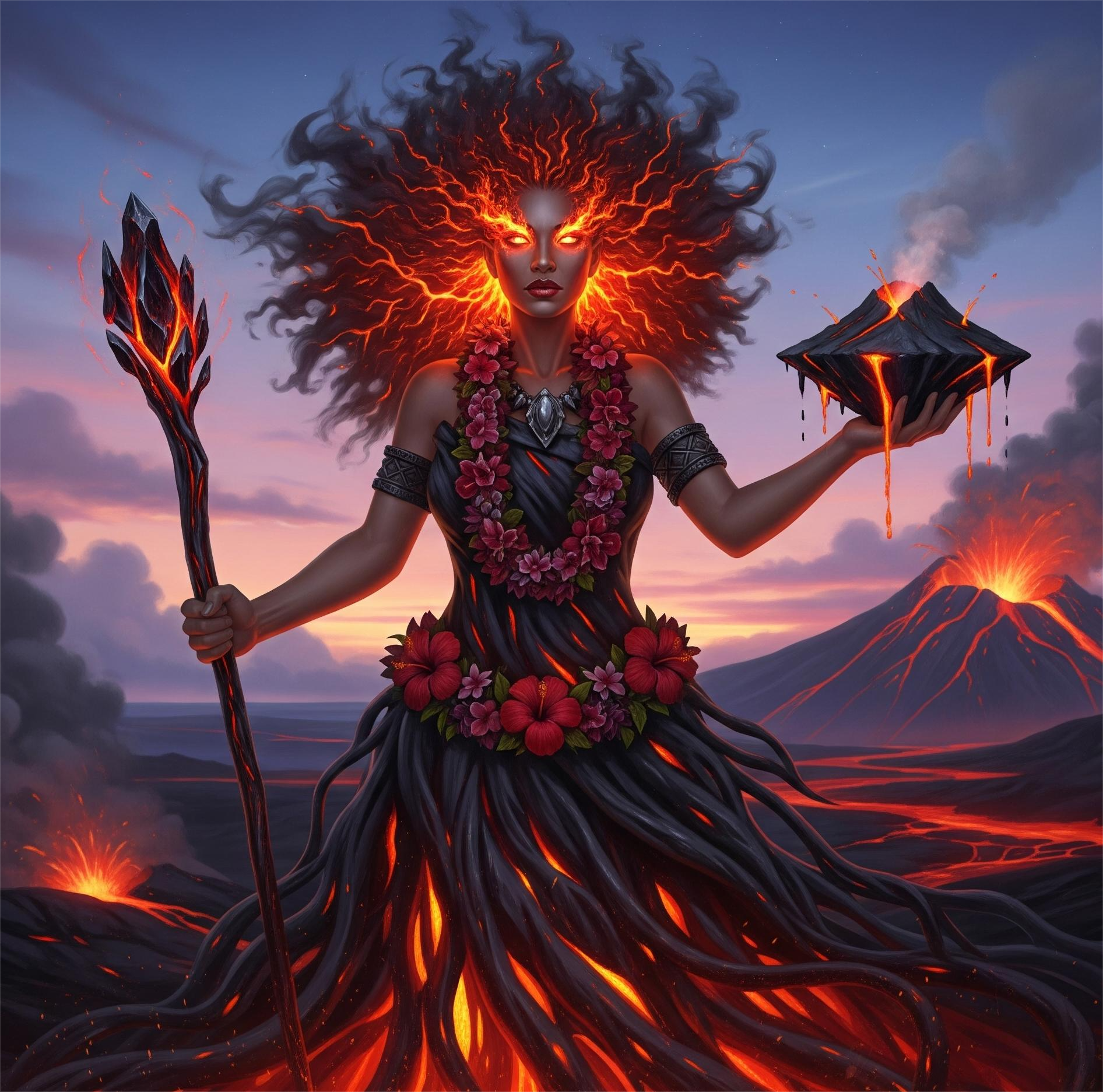In Hawaiian mythology, few deities command as much awe and reverence as Pele, the goddess of volcanoes, fire, and creation. Often depicted as a fiery, passionate, and volatile force, Pele is believed to dwell in the crater of Halemaʻumaʻu at the summit of Kīlauea, one of the world's most active volcanoes. Her story is woven into the islands themselves, which were said to have been formed by her volcanic eruptions.
Pele's myths tell of her arrival in Hawaiʻi from the ancestral homeland of Kahiki, her battles with her sister Nāmaka (the goddess of the sea), and her many love affairs and acts of vengeance. These narratives explain natural phenomena, such as lava flows and eruptions, as expressions of Pele's moods and desires. Locals often leave offerings—flowers, food, or chants—at volcanic sites to honor her and seek her favor.
Even today, Pele is a living presence in Hawaiian spirituality. Stories of her appearing as an old woman or a beautiful young traveler are told with both respect and caution, warning against disrespecting the land. Her worship illustrates the deep connection between Hawaiian cosmology and the island's dynamic landscape.







